The project is based on the architectural power of the Tournelles farm rooted in its simplicity and the massiveness of these volumes, of which the two large original barns of the farm have been preserved, although they did not succeed in preserving the constructions of the lateral wings that border the courtyard. In its place, they built two new buildings where the classrooms for the music school workshops are located, a multi-purpose room and the support rooms for the performance areas (offices, dressing rooms, stage clearance…).

Chessy Cultural Center by OPUS 5 Architectes. Photograph by Luc Boegly.
The orchestra room of the music school and the large auditorium are respectively located in the two barns. The main performance hall has fixed stands with a width of 200 seats and the orchestra hall has a retractable grandstand that allows for both small-scale performances (60 seats) and rehearsals for musical ensembles, freeing up seating space.
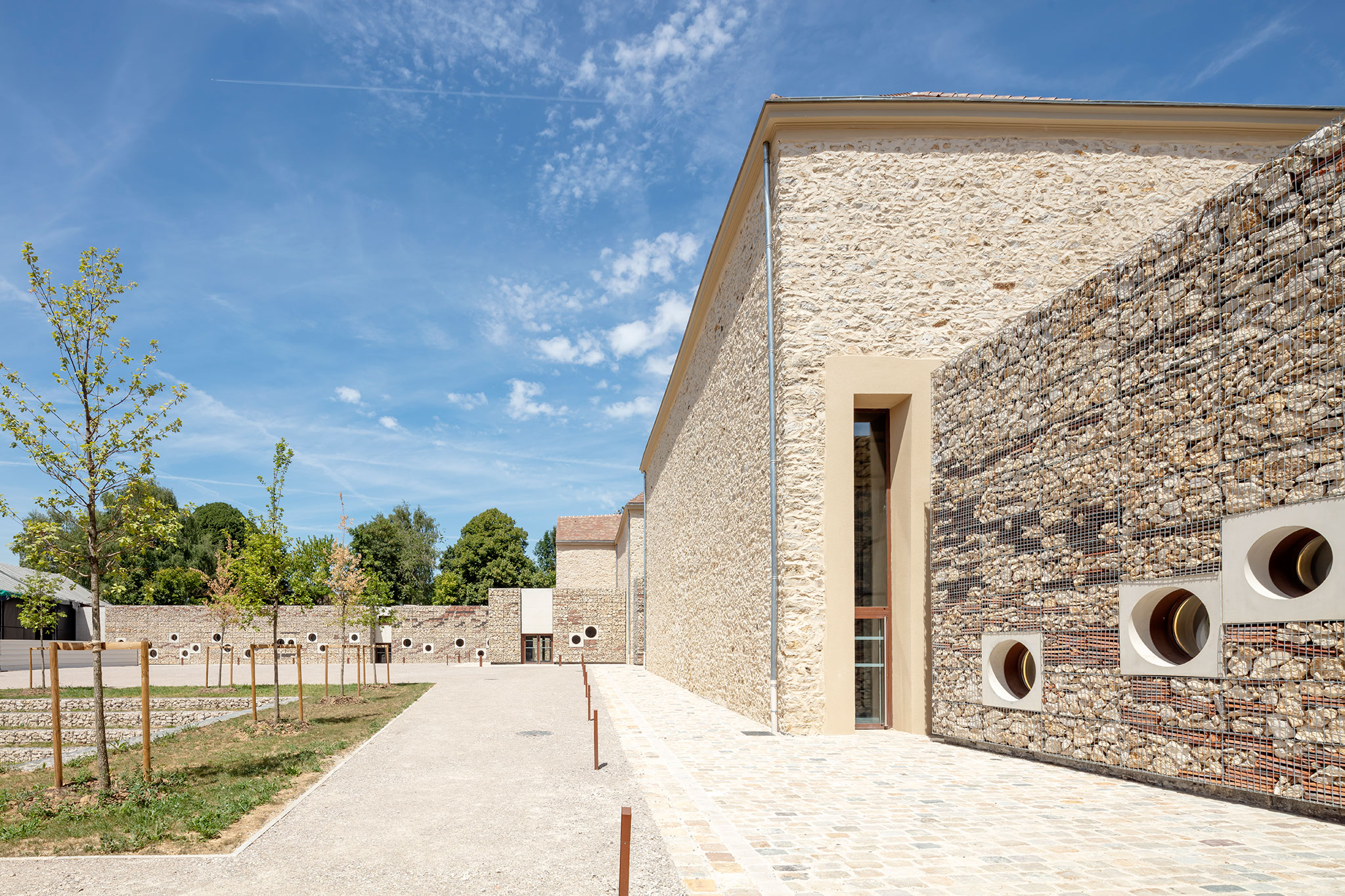
Chessy Cultural Center by OPUS 5 Architectes. Photograph by Luc Boegly.
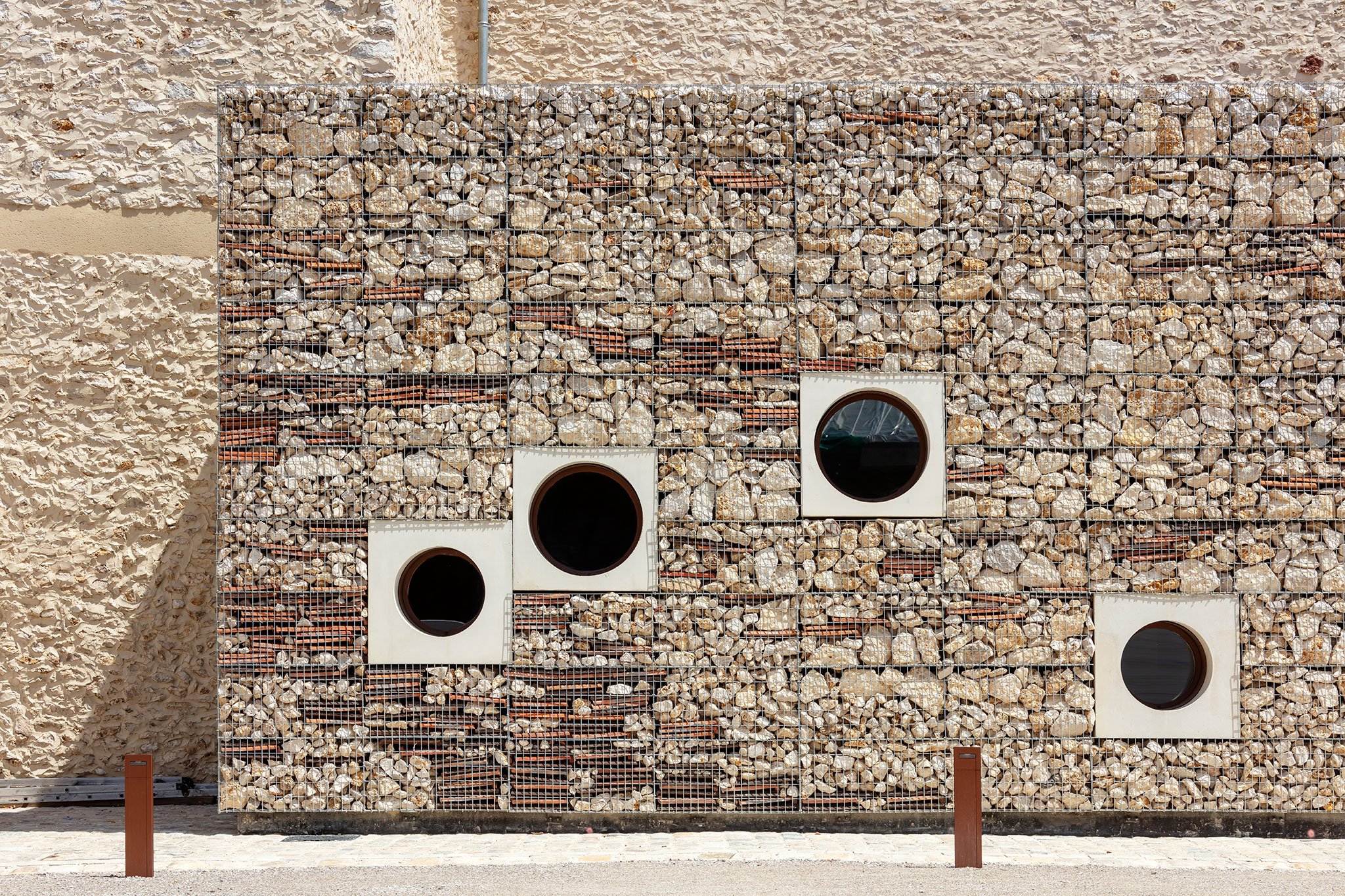
Chessy Cultural Center by OPUS 5 Architectes. Photograph by Luc Boegly.
Description of project by OPUS 5 Architectes
The new cultural centre of Chessy takes place on the former Tournelles farm, today a rare vestige of these great Briard farms that housed then efficient tools to make the most of the heavy and water-laden soils of the region.
This site is characterized as an in-between, a dash, a remnant of rurality in a booming urban jawbone. To the northwest, the city of Chessy and its peripheral housing estates that nibble on the remains of Brie, to the southeast, the Disney complex, perfectly delimited and defined.
The destiny of the city has changed significantly with the creation of sector IV of the new city of Marnela-Vallée and also the construction of Disney. This supposes a great reversal, the transition from a moderate rural town to a peri-urban city that is built in a few decades, a demographic, economic, social, but also identity and representative reversal. In this context of urban stratification of the city, La ferme des Tournelles has the value of a monument in the agglomeration.
First of all, for its scale, the stark contrast to the surrounding buildings, be it La Brie, the buildings in the village of Chessy or the Disney recreational facilities.
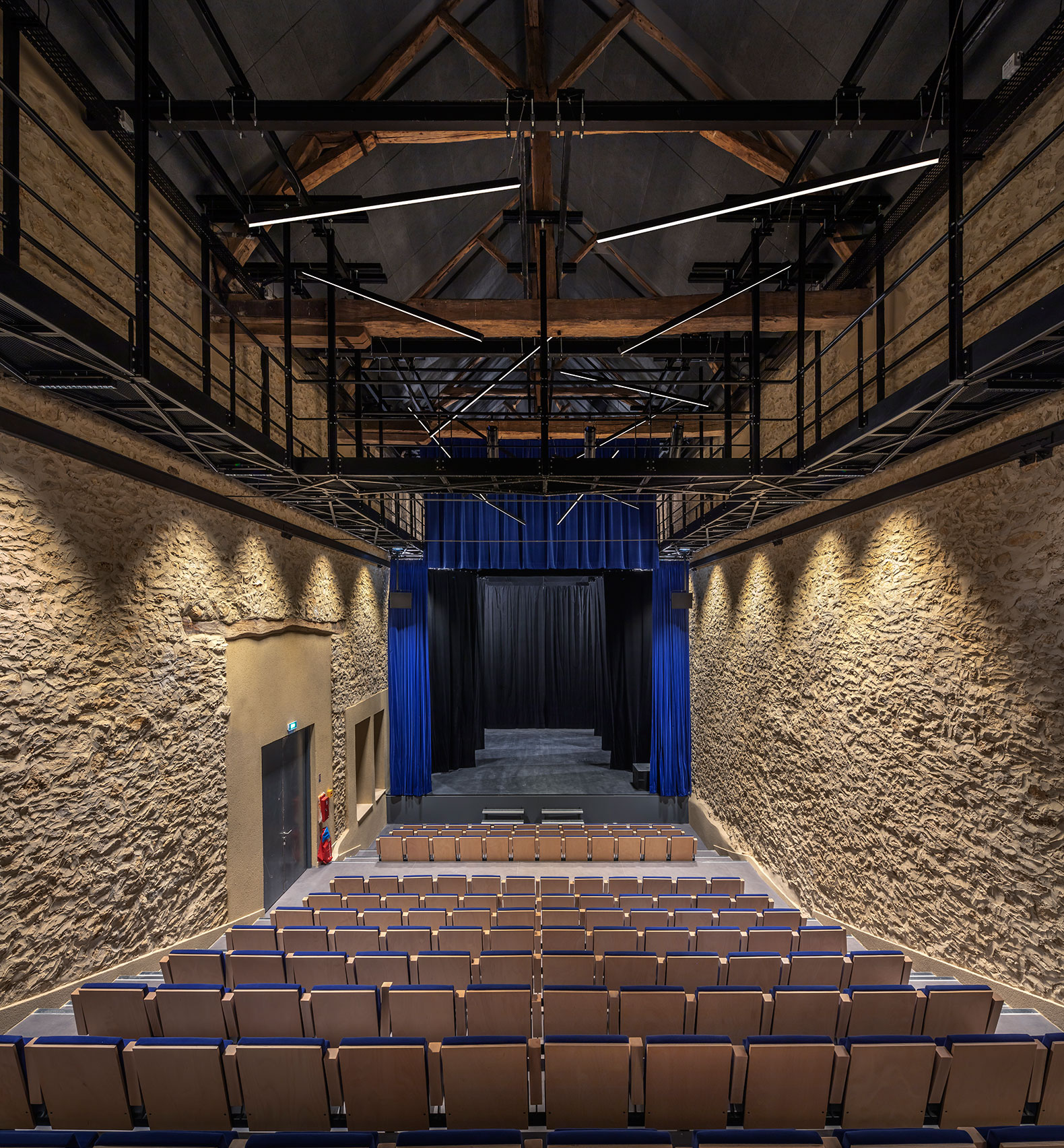
Chessy Cultural Center by OPUS 5 Architectes. Photograph by Luc Boegly.
Due to its morphological singularity, due to the new rarity that now makes it an accident, an event in this context of housing or leisure.
Finally, for its historical and representative value, since the ploughing of the land was practised there, an essential resource and wealth of the region, perpetuating the authentic memory of the great agriculture of Ile de France.
The project had to be read clearly and reflect an articulation between two worlds, that of the new city and that of illusion, both parachuted almost by chance, without any relation to the history of the landscape, while the Tournelles estate, authentic and permanent, it recalls without artifice the memory of an agricultural world without which the neighbouring buildings would not exist.
This solid truth, beacon and reference, had to be preserved against the neighbouring cardboard illusion.
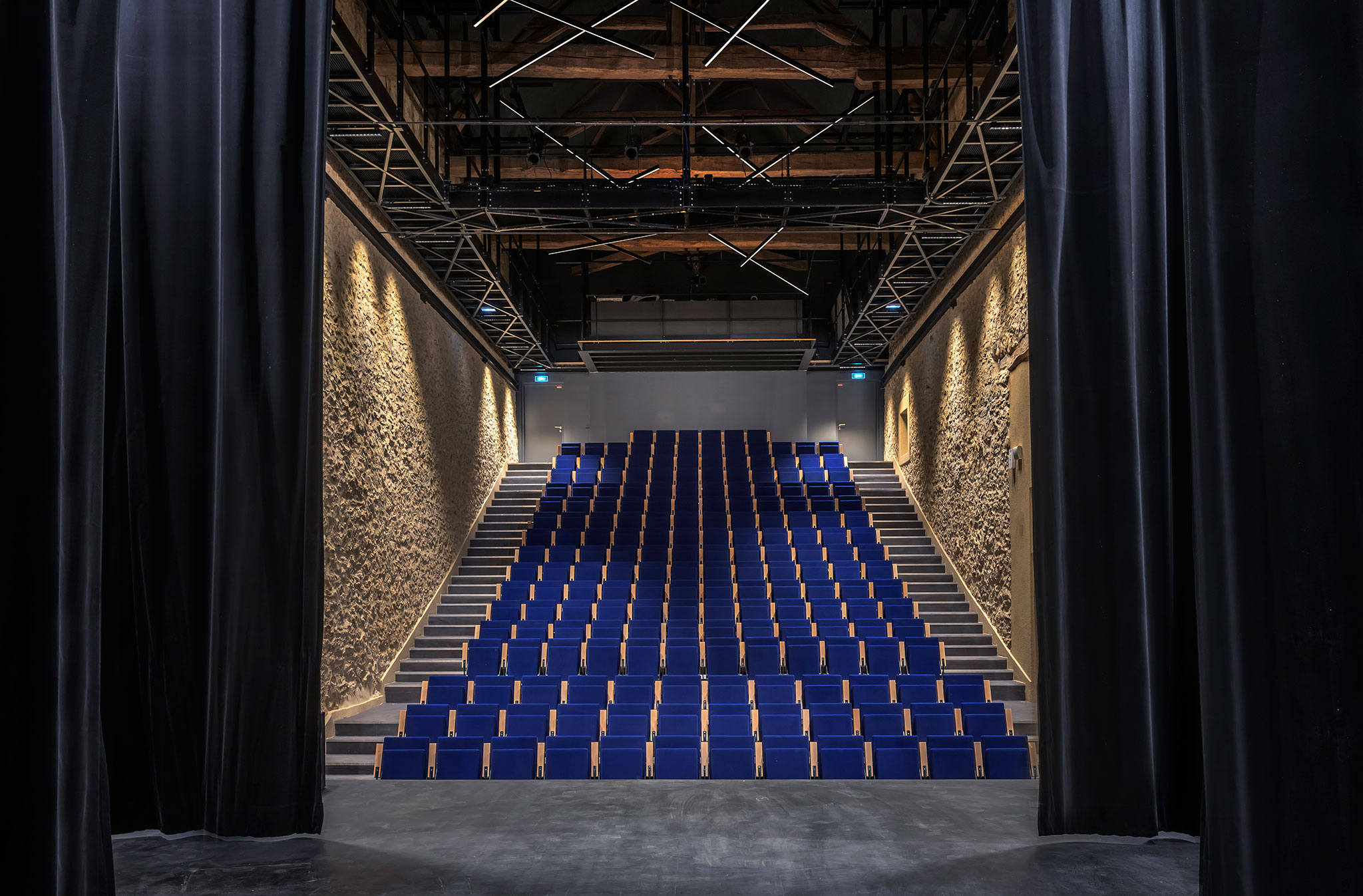
Chessy Cultural Center by OPUS 5 Architectes. Photograph by Luc Boegly.
The operation consisted of preserving this significant witness to the rural world of Briard, in danger of extinction, and installing an innovative cultural program there, integrating current demands and techniques and capable of continuing to evolve over time. Therefore, it was necessary to reconcile past and future, creating a clear dialogue between these two components, a priori antagonistic.
In order for relationships to be established, it was previously essential to define what existed, a place of memory, of memories, and by definition interpretable in multiple ways. Therefore, it was necessary to know what this Briard farm consists of, if it was sufficiently constituted to be identifiable.
What were the elements that deeply characterized it, and what was imperative to preserve, what could we remove, destroy, add or transform to ensure its reading and therefore its memory?
How to evoke the regional agricultural past and not fall into the anonymity of a banalized urbanization or even in a nostalgic scenario detached from any current reality?
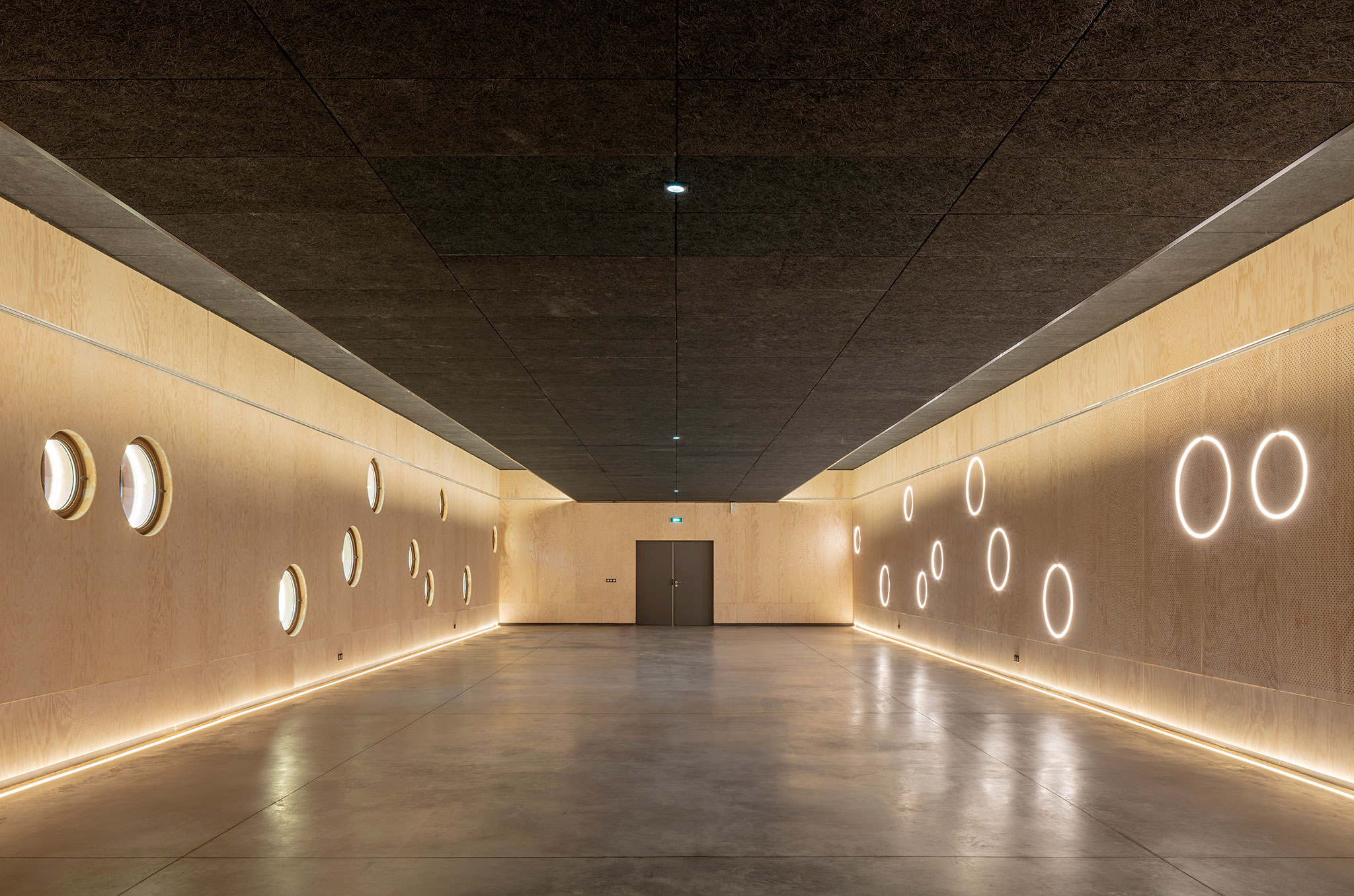
Cultural Issues
The new cultural center also had to be easily identifiable, exceptional and unusual, a signature of municipal and regional dynamism, an attractive and seductive building, guarantee of a generous and successful cultural policy.
Being the objective, from the beginning, to express the interest of its content, the quality of its packaging and, above all, to make the public and students delve into it with curiosity, joy and pride.
Architectural power of the Tournelles farm lies in its simplicity and the massiveness of these volumes that surround a protected central space where life is concentrated, a traditionally introverted design, totally enclosed, protecting itself from bad weather and the vast outside world. It is reminiscent of the fortified castle, with its wide courtyard and its towers that mark the curtain walls. The two huge blind constructions that border the north/east access emerge as two towers at the entrance to the city or even as two dungeons, ensuring the tranquility and security of the site due to their imposing masses.
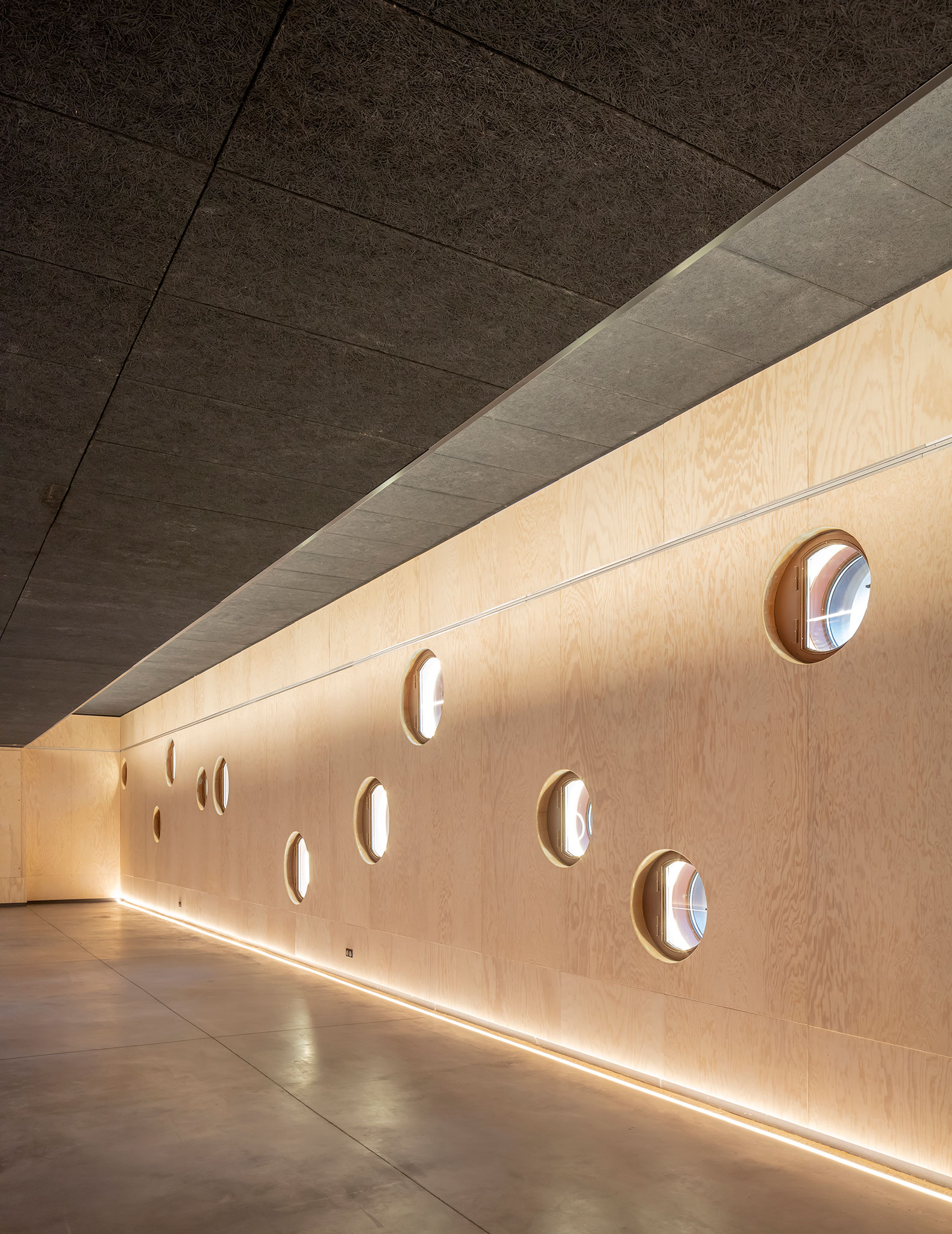
Chessy Cultural Center by OPUS 5 Architectes. Photograph by Luc Boegly.
Although the large main volumes of the two granaries have been preserved, diagnosis made at the beginning of the intervention meant that the constructions of the two lateral wings that border the courtyard on these north/west and south/east faces were not preserved, taking into account account both of his very poor state of health and of his difficult spatial conditions of exploitation.
Thus, two new buildings have been fitted out in place of the deconstructed wings to house, to the south/east of the patio, the music school workshops, and to the northwest, the multipurpose room and the support rooms for the show (offices, dressing rooms ,
clearing the stage…).
These two extensions have been treated as perimeter walls in order to recover the initial spirit of the farmhouse and its general morphology organized around the large central distribution patio.
The search for great consistency with the preserved remains led to reusing the materials from the original wings and inventing a new epidermis from the materials already present at the site.
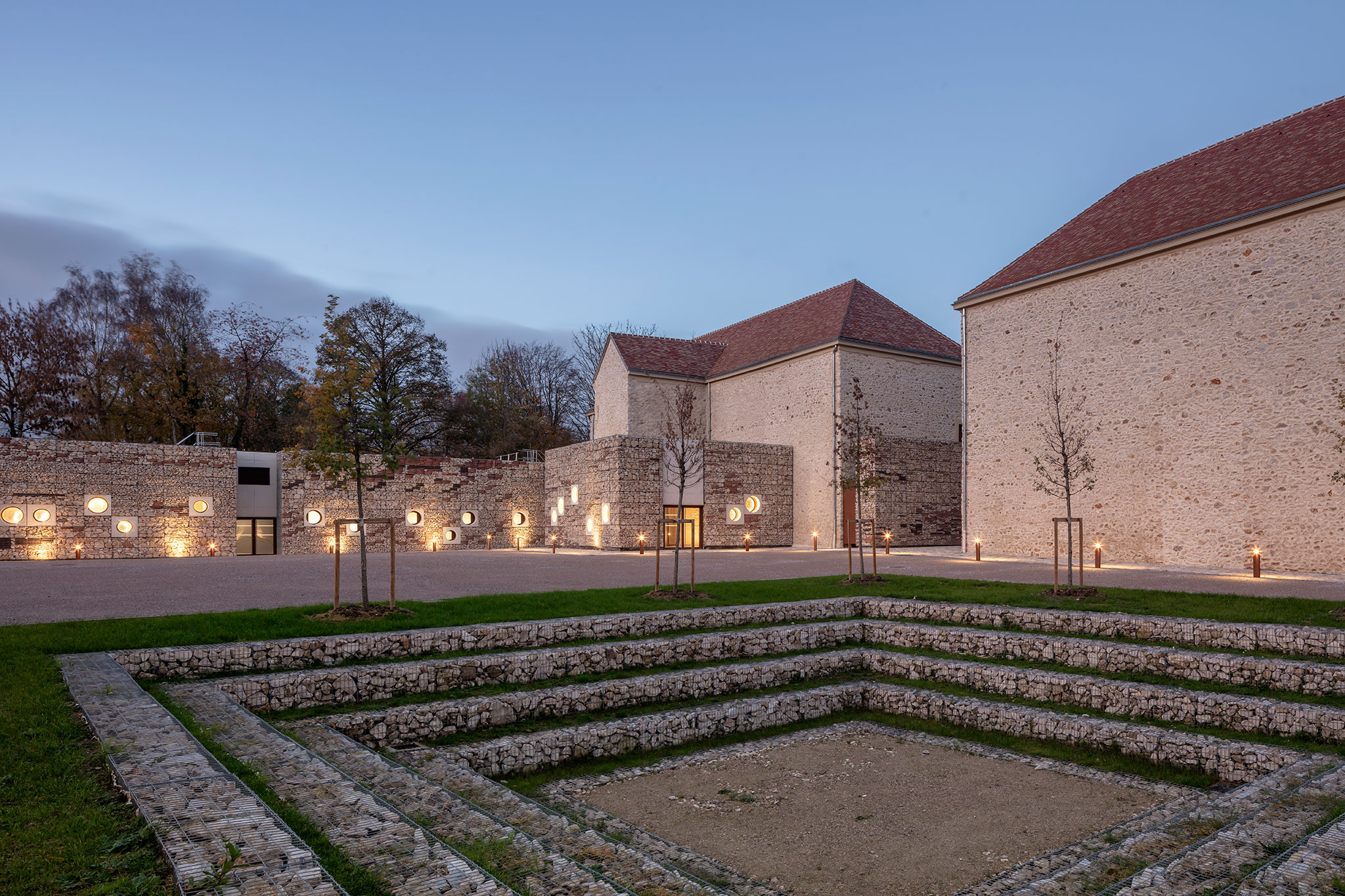
Chessy Cultural Center by OPUS 5 Architectes. Photograph by Luc Boegly.
Interior treatment of the spaces is based on the use of materials left raw, limiting the effects, the manners, with the aim of reinforcing the importance of the materiality of the project and anchoring the equipment even more in its history, in the memory of the place.
Combination of concrete formwork to the left of the bare vertical walls, rubble masonry from the two granaries rehabilitated by grouting barely cut, the mineral screeds and anthracite wood fiber on the floors and ceilings with the blond wood of the acoustic walls gives the whole an almost monastic environment conducive to musical practice.
Orchestra room of the music school and the large auditorium slide respectively into the two preserved barns to fully benefit from these two atypical volumes so characteristic of the place.
The main performance hall has fixed stands with a width of 200 seats and the orchestra hall has a retractable grandstand that allows for both small-scale performances (60 seats) and rehearsals for musical ensembles, freeing up seating space.
These two rooms are equipped with all the stage equipment (false grill, video projection, sound equipment, stage lighting, etc.) offering a wide range of possibilities (musical shows, theatre, dance, video, etc.).
























































































